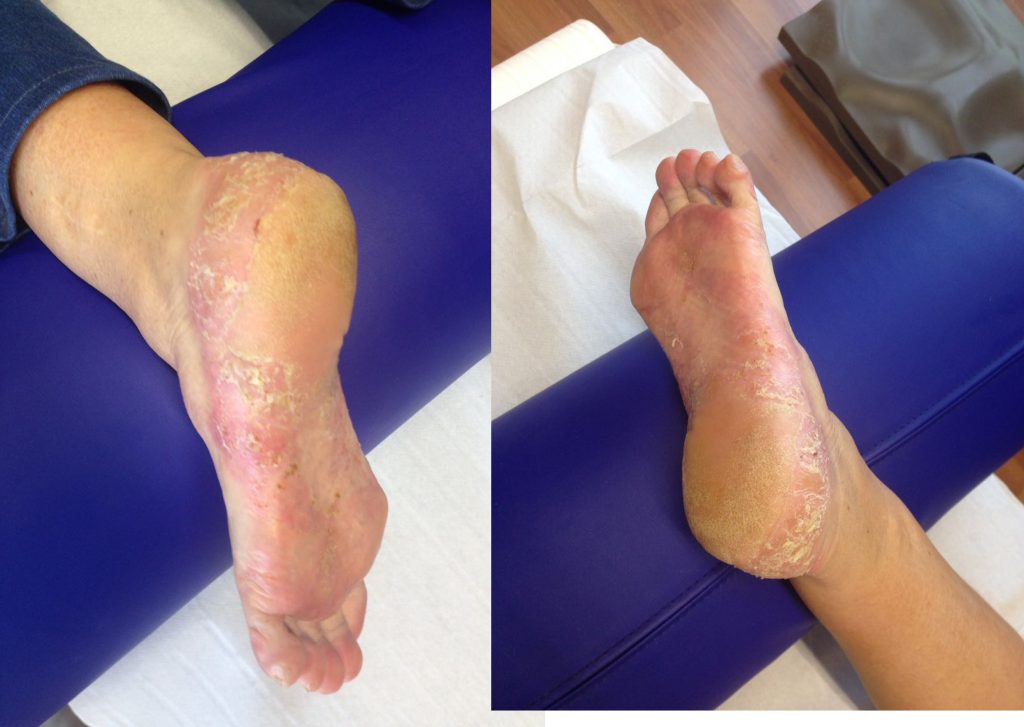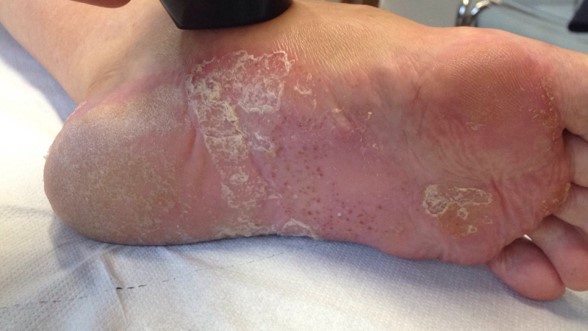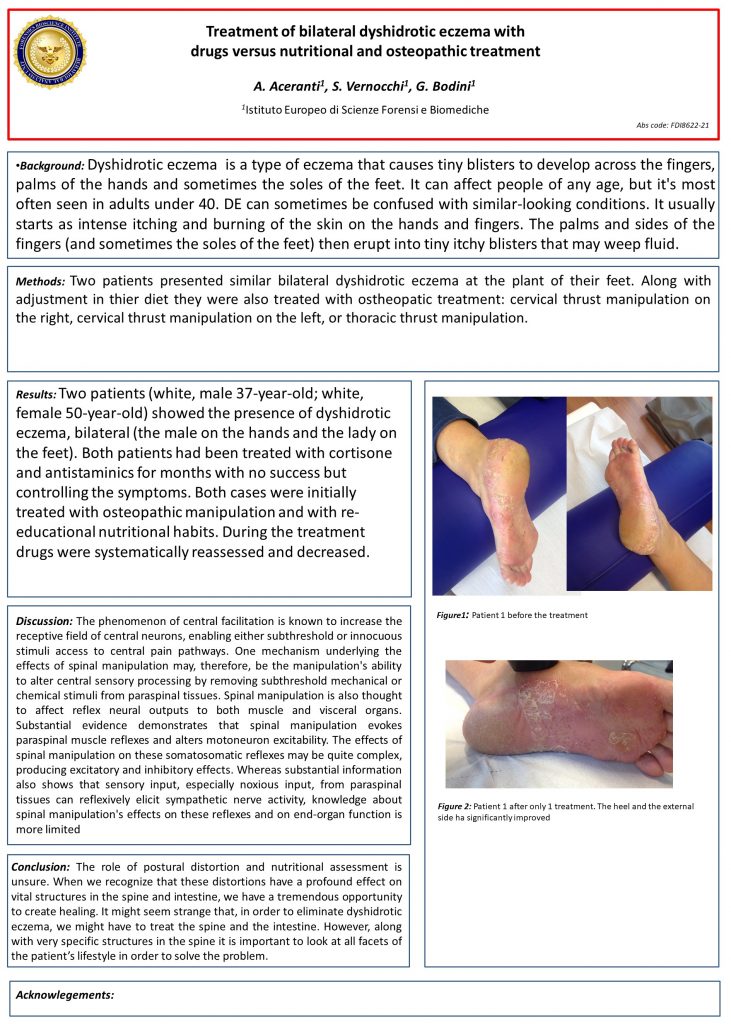Background: Dyshidrotic eczema is a type of eczema that causes tiny blisters to develop across the fingers, palms of the hands and sometimes the soles of the feet. It can affect people of any age, but it’s most often seen in adults under 40. DE can sometimes be confused with similar-looking conditions. It usually starts as intense itching and burning of the skin on the hands and fingers. The palms and sides of the fingers (and sometimes the soles of the feet) then erupt into tiny itchy blisters that may weep fluid.
Methods: : Two patients presented similar bilateral
dyshidrotic eczema at the plant of their feet. Along with adjustment in thier
diet they were also treated with ostheopatic treatment: cervical thrust
manipulation on the right, cervical thrust manipulation on the left, or
thoracic thrust manipulation.
Results: : Two patients (white, male
37-year-old; white, female 50-year-old) showed the presence of dyshidrotic
eczema, bilateral (the male on the hands and the lady on the feet). Both
patients had been treated with cortisone and antistaminics for months with no
success but controlling the symptoms. Both cases were initially treated with
osteopathic manipulation and with re-educational nutritional habits. During the
treatment drugs were systematically reassessed and decreased.
Discussion: : The phenomenon of central
facilitation is known to increase the receptive field of central neurons,
enabling either subthreshold or innocuous stimuli access to central pain
pathways. One mechanism underlying the effects of spinal manipulation may,
therefore, be the manipulation’s ability to alter central sensory processing by
removing subthreshold mechanical or chemical stimuli from paraspinal tissues.
Spinal manipulation is also thought to affect reflex neural outputs to both
muscle and visceral organs. Substantial evidence demonstrates that spinal
manipulation evokes paraspinal muscle reflexes and alters motoneuron
excitability. The effects of spinal manipulation on these somatosomatic
reflexes may be quite complex, producing excitatory and inhibitory effects.
Whereas substantial information also shows that sensory input, especially
noxious input, from paraspinal tissues can reflexively elicit sympathetic nerve
activity, knowledge about spinal manipulation’s effects on these reflexes and
on end-organ function is more limited
Conclusion: : The role of postural distortion and
nutritional assessment is unsure. When we recognize that these distortions have
a profound effect on vital structures in the spine and intestine, we have a
tremendous opportunity to create healing. It might seem strange that, in order
to eliminate dyshidrotic eczema, we might have to treat the spine and the
intestine. However, along with very specific structures in the spine it is
important to look at all facets of the patient’s lifestyle in order to solve
the problem.
Authors: A. Aceranti, S. Vernocchi, G. Bodini
Published: Italian Journal of Medicine, Sept 2018
Presented: Poster FDI8622-21 at the FADOI National Congress 2018

A sinistra il paziente prima del trattamento.
A destra l’eczema dopo un singolo trattamento



